The Siberian tiger (Amur tiger) is the most significant wild tiger species in the Far East, historically distributed widely in northeastern China. However, since the 1950s, due to large-scale poaching and habitat destruction, the population has severely declined; in the Northeast China Tiger and Leopard National Park in 2017, there were only 27 individuals.
In recent years, the wild Siberian tiger population in China has gradually increased, coinciding with improved ecological protection and wildlife conservation efforts. When the Siberian Tiger National Park was officially established in 2021, the number of wild Siberian tigers rose to 50.
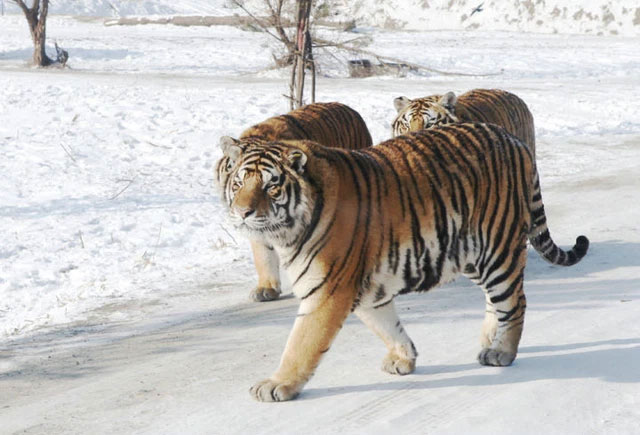
Siberian tigers are the best cold-resistant species.
Among the nine modern tiger subspecies, including three extinct species, Siberian tigers are the best cold-resistant species, and they are found in Northeast Asia.
Tigers are high-demand predators regarding their habitat. A South China tiger requires a territory of about 70 square kilometers of forest, and the Amur tiger is no exception; proportionate to their size, they require even larger territories, potentially up to 500 square kilometers.
Interestingly, throughout history and even in modern times, the distribution of Siberian tigers in Russia is limited to the southeastern corner of Russia, with no signs of tigers appearing in the vast interior regions of Siberia.
Tigers are highly mobile and possess a strong exploratory instinct. Since their emergence in East Asia, they have quickly spread to most forests in Asia. But why haven’t they ventured deeper into the interior of Siberia?
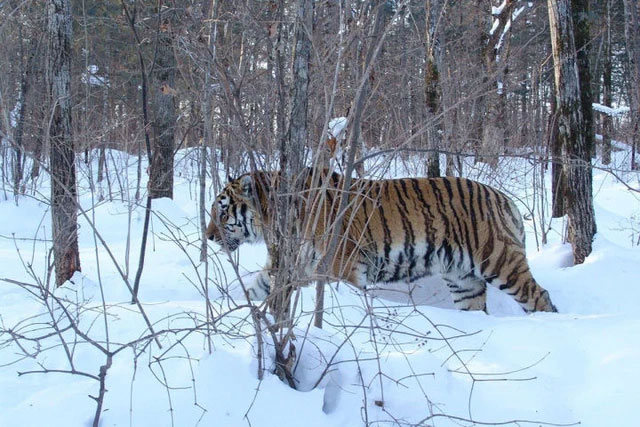
Tigers are high-demand predators regarding their habitat.
No Food in the Interior of Siberia?
Prey availability is one of the most critical factors affecting the distribution of predator species, leading many to believe that the reason Amur tigers cannot survive in the interior of Siberia is the lack of large ungulate species there.
But is this really the case? Let’s examine the hunting preferences of Siberian tigers. An ecological study in the Sikhote-Alin mountain range indicates that the primary prey for Amur tigers includes several medium to large ungulate species such as red deer, wild boar, sika deer, and moose.
In areas where large prey is relatively scarce, Siberian tigers will increase their hunting rate of medium and small prey.
In the interior of Siberia, while it is extremely cold, the availability of medium and large ungulate species is relatively abundant, with a significant population of reindeer, wild boar, and moose.
These ungulates are precisely the basic prey for tigers, so it is inaccurate to say there is no prey for tigers in the interior of Siberia.
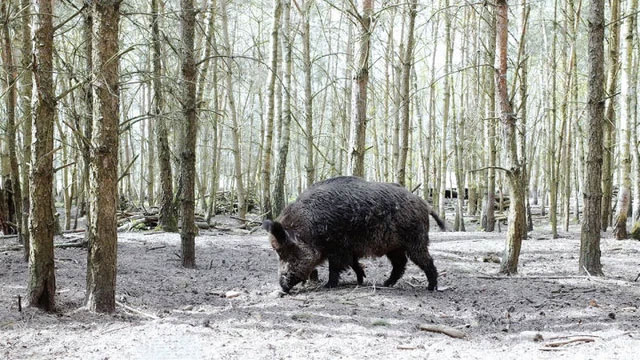
Wild boar is one of the targeted prey whenever tigers hunt.
Are Tigers Afraid of Other Strong Predators?
Competition among individuals is a common phenomenon in nature. Besides food, the intensity of competition also influences the distribution of species.
In the interior regions of Siberia, the main predators are brown bears and gray wolves, leading some to believe that the larger size of brown bears compared to Siberian tigers and the numerical advantage of wolves are reasons why Siberian tigers do not venture deeper inland.
But is this statement accurate? In the animal kingdom, a smaller body size often correlates with lower endurance. There has long been a saying that “a tiger cannot defeat a pack of wolves”; however, when examining data from various wildlife studies in Russia, you will find this saying is not entirely accurate.
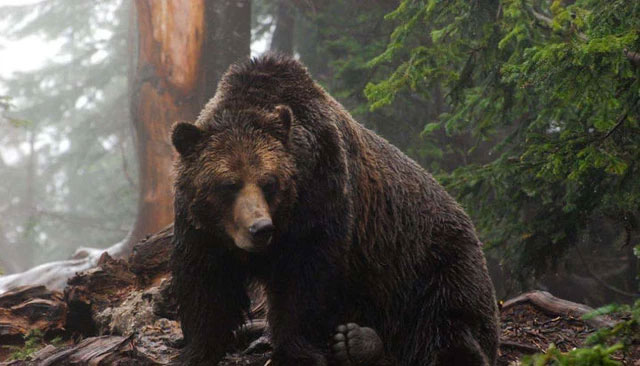
In the interior of Siberia, the main predators are brown bears and gray wolves.
Researchers have studied the dietary structure of Siberian tigers in the Sikhote-Alin region and found that bears comprise 7.1% of the tiger’s diet, with 1% being Ussuri brown bears. According to a study by the International Wildlife Conservation Association, Siberian tigers are also on the menu of Ussuri brown bears, accounting for 0.5%.
Many scientific exploration documents have recorded the phenomenon of “mutual encounters” between tigers preying on bears and bears preying on tigers. However, brown bears are omnivorous, with over 90% of their diet consisting of plant matter, making them not the dominant predator, and direct competition with tigers is not fierce.
Data has shown that brown bears are also an important prey for Siberian tigers.
Siberian tigers and gray wolves in Russia have competed with each other since ancient times. It has been observed that when the population of Siberian tigers was high, the number of gray wolves in the area was very low.
When Siberian tigers were heavily hunted, the gray wolf population increased rapidly. Later, as Siberian tigers were protected and gradually recovered, the gray wolf population declined.
After the 1980s, the number of Siberian tigers in Russia reached a high and remained stable for a long time, during which the population growth of gray wolves stagnated.
A wealth of evidence indicates that tigers are a species without natural enemies, and in nature, no animal can curb their development.

Siberian tigers and gray wolves in Russia have fought and competed with each other since ancient times.
The Real Reason Why Amur Tigers Do Not Inhabit the Interior of Siberia
Historically, there has only been one real reason why Siberian tigers have not spread into the interior of Siberia: environmental issues—this area is covered by thick snow year-round, making it very unfavorable for tiger hunting.
Tigers are apex predators in forest ecosystems, characterized by their orange color with dark brown stripes. This coloration does not provide good camouflage in the snow and makes them easily detectable by prey.
Moreover, tigers do not have claws like lynxes, making movement through deep snow very challenging, which deters Siberian tigers from venturing deeper inland. Additionally, the hunting and ambush characteristics of tigers face many disadvantages in the extremely thick snow environment found in the interior of Siberia.
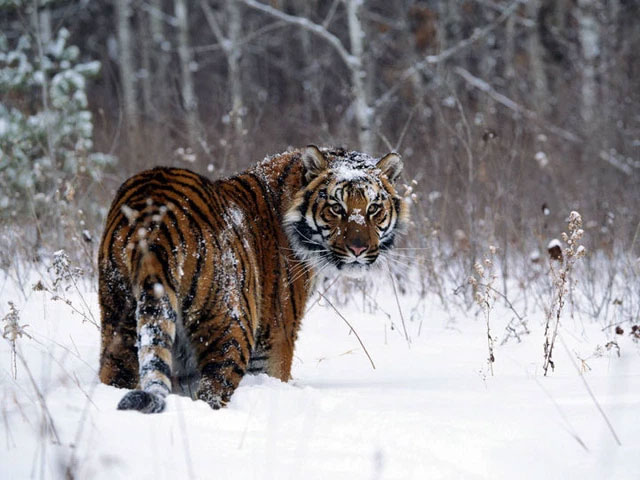
The area covered by thick snow year-round is very unfavorable for tiger hunting.
Therefore, while the natural habitat for Siberian tigers theoretically should be in the Far East of Russia, the interior regions of Siberia are unsuitable for their survival. As a result, this species is more widely distributed in northeastern China and southeastern Russia. According to scientists’ predictions, in the future, Siberian tigers from Russia will continue to cross the border into northeastern China, where the habitat is more favorable.





















































